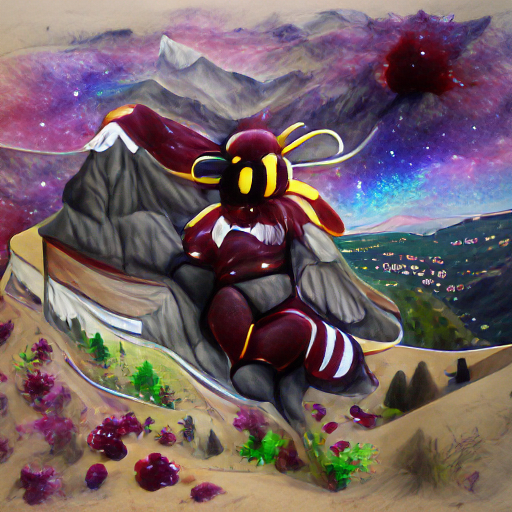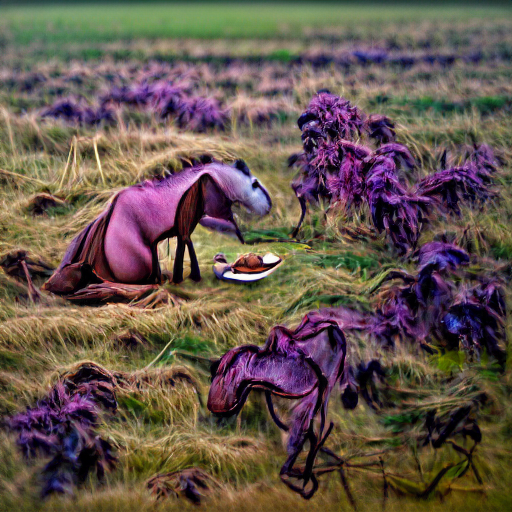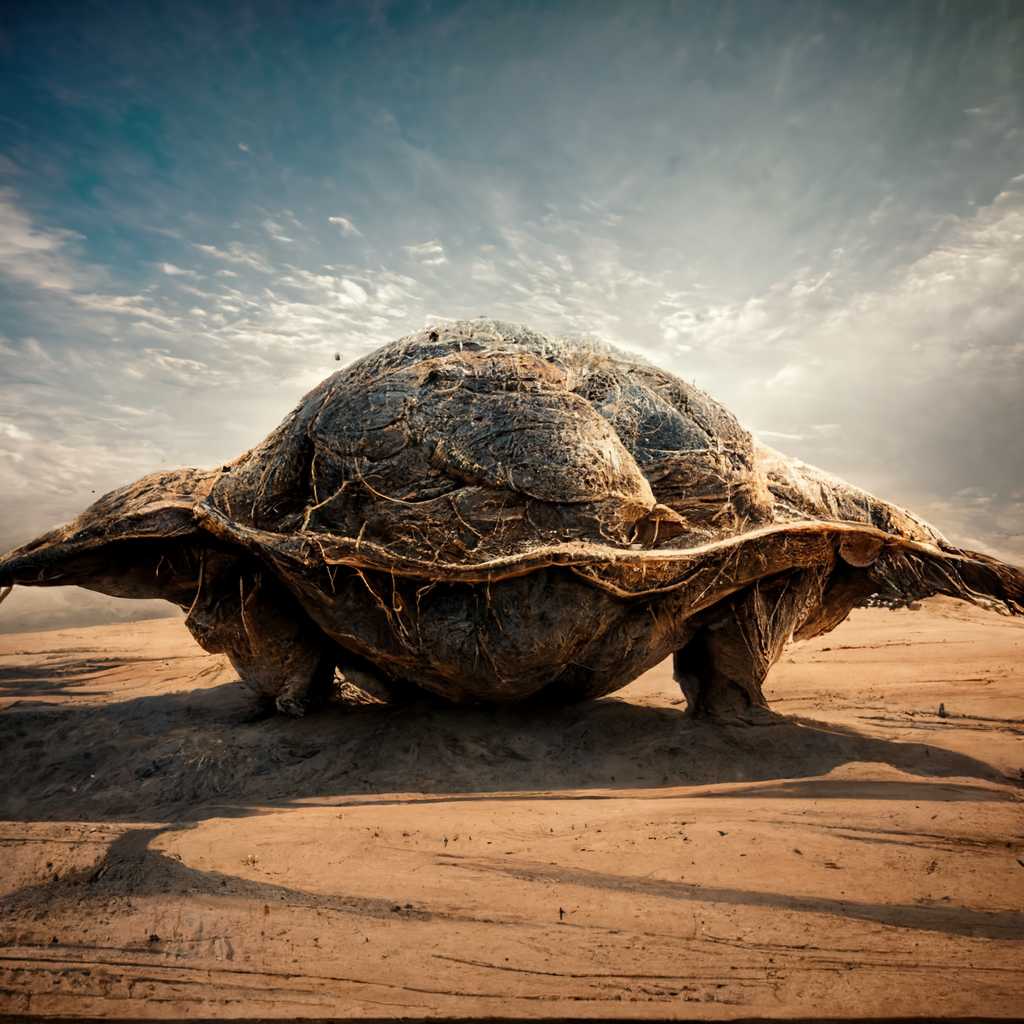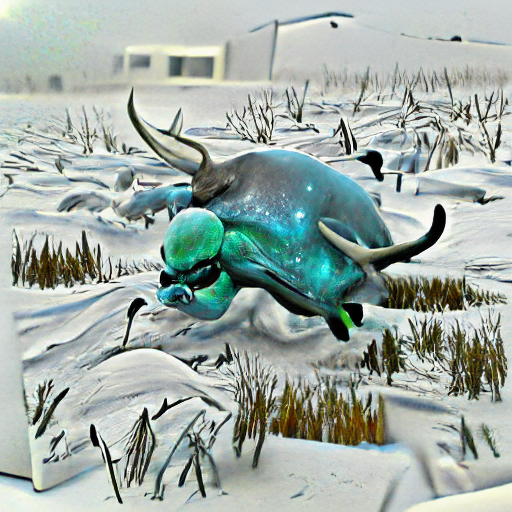Discover more creatures

#058 Forrest
Forrests are ghostly entities that inhabit jungles and forests. They are largely transclucent and intangible, typically only able to affect the world through moving wind. In the foggiest nights, a forrest can be seen with the naked eye. Locals often refer to forrests as the "soul of the forest".

#020 Starbug
Fully-grown starbugs make up the majority of visible lights in the night sky with their planet-sized bodies, but baby starbugs hatch and spend most of their pre-celestial life on abandoned planets until they learn to fly well enough to pierce gravity wells. When their eggs are laid in space, they are made of one of the strongest materials known to man. They drift endlessly, often for centuries, until they find a planet with sufficient gravitational pull to draw them into its atmosphere. The meteoric impact is what cracks the shell and releases a newborn starbug.

#076 Hifinginn
Although the celestial cataclysm was a great catastrophe, it did introduce us to the Hifinginn and their universes—and consequently pushed forward our technology, biology, medicine, and understanding of the cosmos at least a century forward. The Hifinginn body is composed of veons instead of atoms, which is believed to be the reason why they largely ignore our universal rules of physics.

#005 Thabu
Thabus are hulking creatures of ancient history that have survived over time by melding with mountains and hibernating. They awake every thousand or so years to see if the world is a better place, but a thabu invariably goes back to sleep after each short period awake. No one is sure what exactly they're waiting for.

#148 Dacagoth
Dacagoths are small, fluffy mushroom-like creatures that live in grottos and caves. They are about the size of a human thumb and are typically a light shade of gray. They spend most of their time sleeping and eating the rocks and fungus of the caverns they inhabit. After several years, they reach maturity and gain the ability to shed their sentience and become a regular mushroom.

#016 Xylach
Xylaches are sprawling reptilian creatures that tend to migrate toward popular human beaches to feed off the trash and food left behind. Although one xylach could easily match twenty or more people in power, they largely remain docile and, at most, loudly grunt towards beach-goers for scraps. Rather than trying to remove them or going to different beaches, people have largely learned to just ignore xylaches.

#176 Vilcino
Vilcini are tiny creatures that are easy to see from afar due to their bright purple color. They live in grassy fields and forests and spend most of their time eating insects, nuts, and berries. The best place to find a vilcino is in a field where a thunderstorm is just ending and the sun is beginning to shine through the branches of the trees: vilcini hair is naturally water-resistant so their texture and movement will naturally stand out against wet, matted down plantlife, even in fields full of the purple ametheo flower that vilcini seek out for environmental camoflage.

#297 Kensix
Kensixes are large, nocturnal reptiles that live in the desert. They are about the size of a car, and have a thick exoshell of chitin which protects them from the sun's rays as well as any physical attacks. To hunt, a kensix will use their deft legs to chase down their prey and repeatedly smash them with their gigantic body, sometimes leaping hundreds of feet in the air to crush unsuspecting prey from above. They are omnivorous, eating whatever meat they can find. Within their shell, kensixes have six rows of elongated incisors.

#322 Ungarmel
When a creature is near, an ungarmel on the prowl will curl up in a ball and hover above the ground, doing its best to blend in with the environment in order to catch its prey unaware. When the time is right, the ungarmel will attack by releasing the creature inside it that drinks blood. After a successful hunt, the creature returns and eventually shares its spoils from inside the ungarmel.
Popular Stories
-
A Dance as Old as Stone by Anonymous user #144
Beneath the craggy, frost-kissed peaks, where mountain airs do blow, The d'geft dwell, a solitude, in realms of stone and snow. Not as we, their lives they lead, in hollow halls of stone, Passing...
- 274 words
- ♥ 4 kudos
-
O Boolics by Muse
The boolics crawl in circles through the grass, Their lives so simple, so free from class. But in the night, they dream of more, A perfect life within their shell; a world to explore. But when t...
- 121 words
- ♥ 3 kudos
-
Ode to Dirbs by Muse
The dirb wanders fields of green With legs so thin, they're not easily seen They search for seeds and scraps to eat A diet that is mostly sweet Though fragile, their legs will mend From every bu...
- 85 words
- ♥ 1 kudo
-
Shadow of an Unknown Past Preview by Jessica
CHAPTER ONE OMENS Mariea Mariea didn’t know where she was—everything was unfamiliar, and she couldn’t remember how she had ended up there. All she knew was that it was too dark to see, and th...
- 3,983 words
- ♥ 2 kudos
-
/that/ time of year by MJ
"Is everything in the car?" My dad calls from the front door. His glasses are low on his nose, making the bags under his eyes look even larger. He's wearing a burnt orange vest over a black t-shirt...
- 582 words
- ♥ 7 kudos
-
The Rogue's Steel-Chapter I by T
"Get back here Mavros!" Helios dodged a merchant and his cart. He huffed, as he glanced toward which direction he could go. He bolted towards an alleyway, skidding on the dirty cobblestone. "Maybe ...
- 3,044 words
- ♥ 6 kudos







